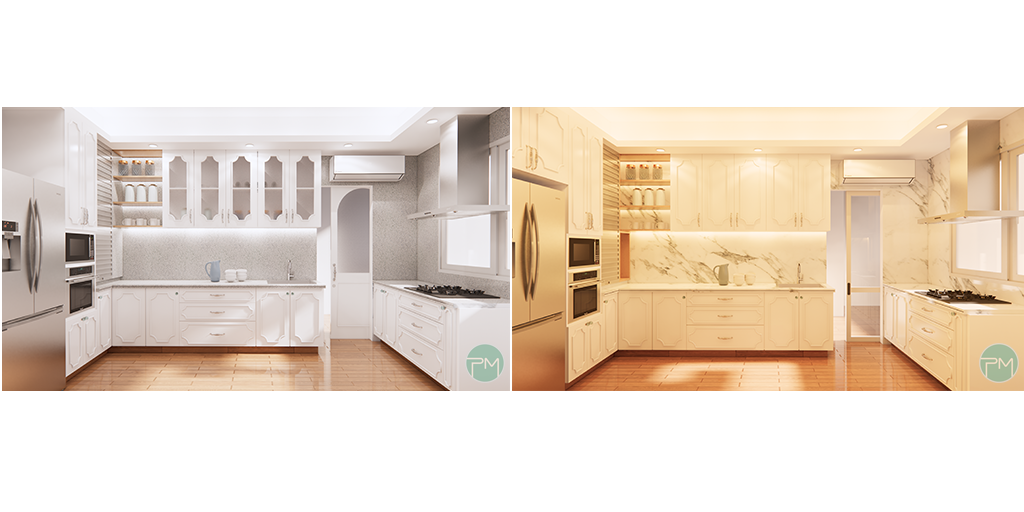
Same design but different aesthetics? Understand the play of light.
Collect full set of guidelines to design your home – for free
Lighting is one element of interior design that is often overlooked. But, when you consider it, the lack of proper lighting can have a tremendous impact on your space. Lighting can affect your mood and even the overall size of a space, which is why it is an essential element to any layout. Proper lighting can drastically change the atmosphere of your room, it can enhance the colors used in your décor and it can even prove useful in marking different areas of your home.
Color Rendering Index
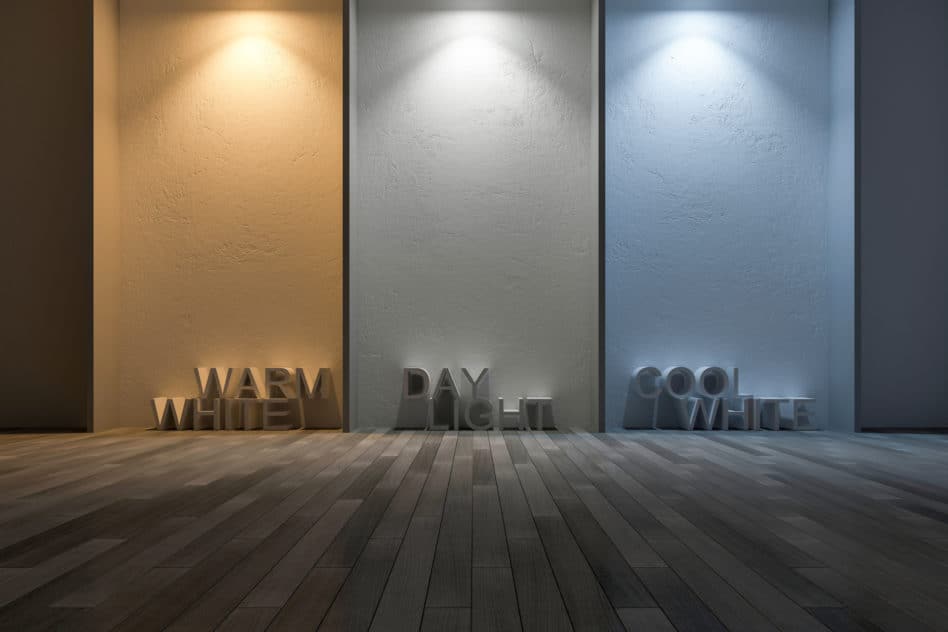
Color rendering refers to how accurately an artificial light source reveals the color of an object compared to how that color appears when illuminated by a natural light source. The CRI uses an index from 1 to 100. The higher the number, the truer the color looks under that light.
Essentially, there are three types of lighting designers use to create style and functionality – ambient lighting, task lighting, and accent lighting.
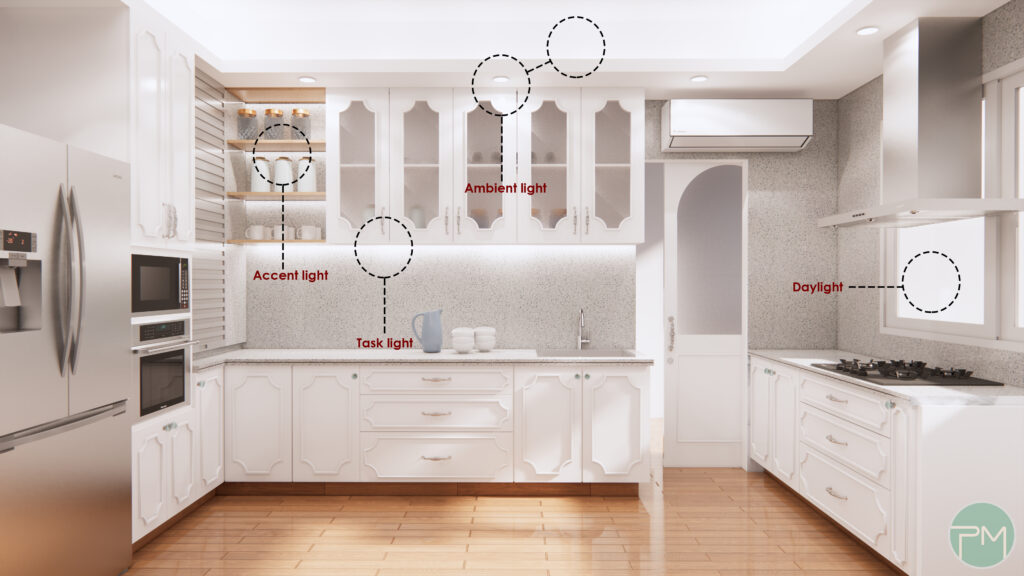
Ambient lighting
General Lighting also often called ambient lighting, because they provide ‘ambiance’ by illuminating an area thoroughly. It provides overall illumination of a space and is meant to create a general and uniform lighting level. It’s the first layer of lighting and sets the tone of a space. That’s why it’s typically soft or diffused. General lighting is especially important in hallways and stairs for optimal orientation and visibility. It is also useful in kitchens or home offices.
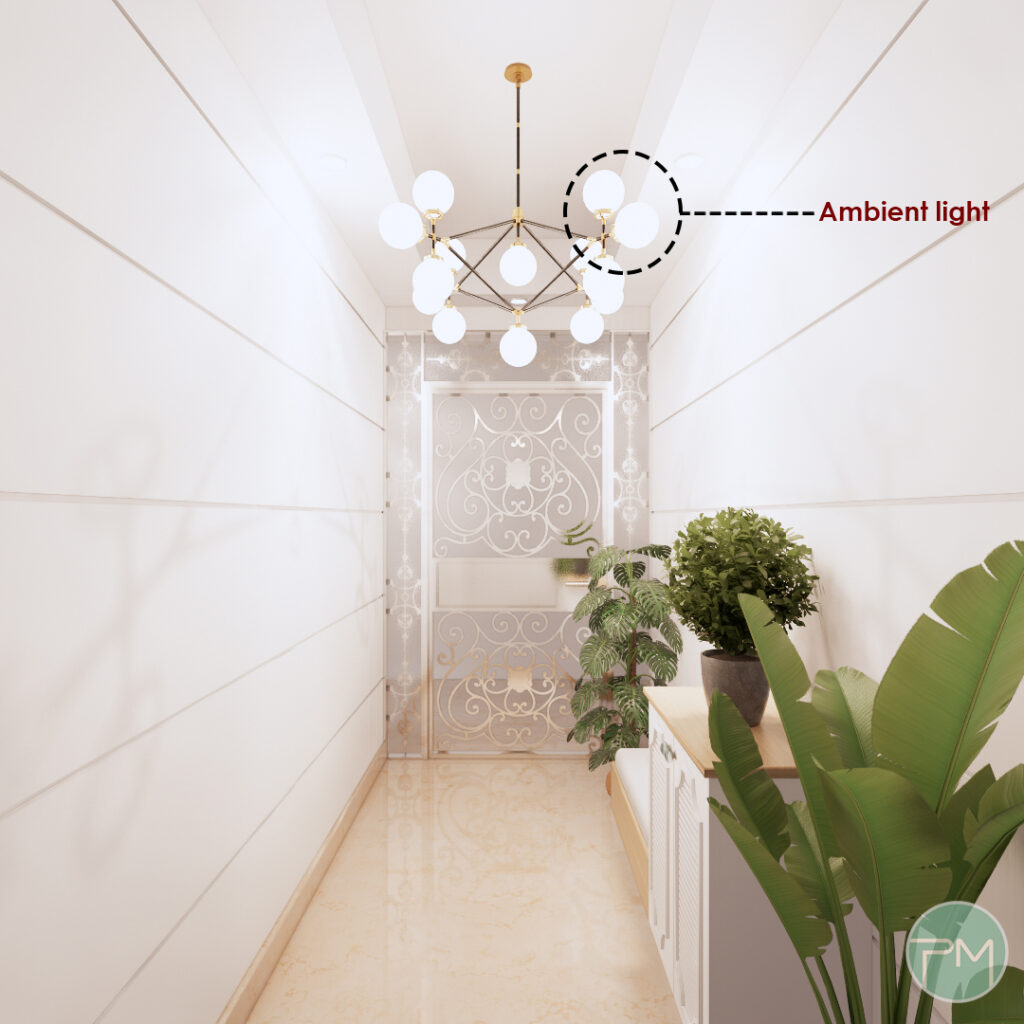
There are several types of ambient lighting-
• Ceiling-mounted or recessed fixtures that direct light downwards
• Cove lighting, floor lamps and pendants that bounce light off ceilings and walls
Although it provides general illumination, ambient light is not ideal for task work or to showcase specific elements in a space, which are the role of the next two types of lighting.
Task lighting
Task lighting is the type of lighting used to facilitate close-range work. This direct, intense illumination is ideal for detailed task work, such as reading and writing at a desk, grooming, and preparing food. It’s focused on the particular area where the task is performed and is brighter than ambient lighting. Effective task lighting is glare free and strong enough to prevent eyestrain. Task lighting is key in the kitchen, where under-cabinet lighting or pendants increase visibility on countertops and food preparation areas. Table and floor lamps provide useful task lighting in living areas and bedrooms, and can reinforce the room’s desired design style.
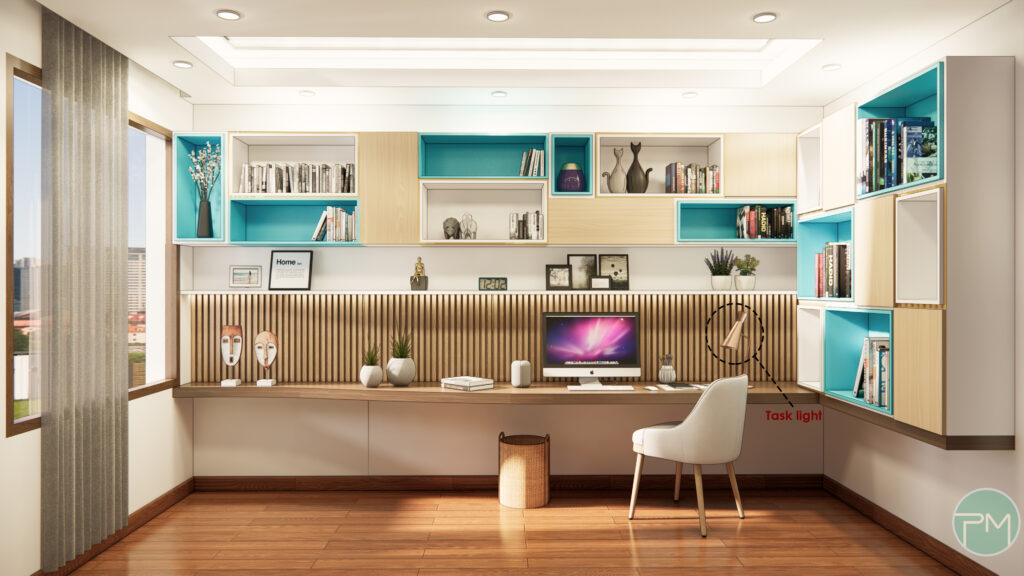
Examples of task lighting include:
• Recessed and track lighting
• Pendants
• Under-cabinet lighting
• Floor, desk and table lamps
• Bathroom vanity lights
Accent lighting
This lighting is used to create ambience and drama by delivering light to a focal point in the room, and overall it is one of the hardest types of lighting to properly create. Accent lights are typically three times as bright as ambient lights. Accent lighting draws attention to a feature, such as artwork, furnishings or architectural details, converting them into focal points. Adjustable fittings are preferred for this type of lighting, as they allow precision focusing on small areas or objects. Accent lighting differs from the other types of lighting in that its primary objective is aesthetic, creating a point of interest for the viewer. It adds style and drama to a space, and is especially suited to living and garden areas, entrances, and anywhere the goal is to display special features. Recessed ceiling lights, track lights or wall-mounted luminaires are very effective in living or common areas as they can be angled and directed to create a highlight.
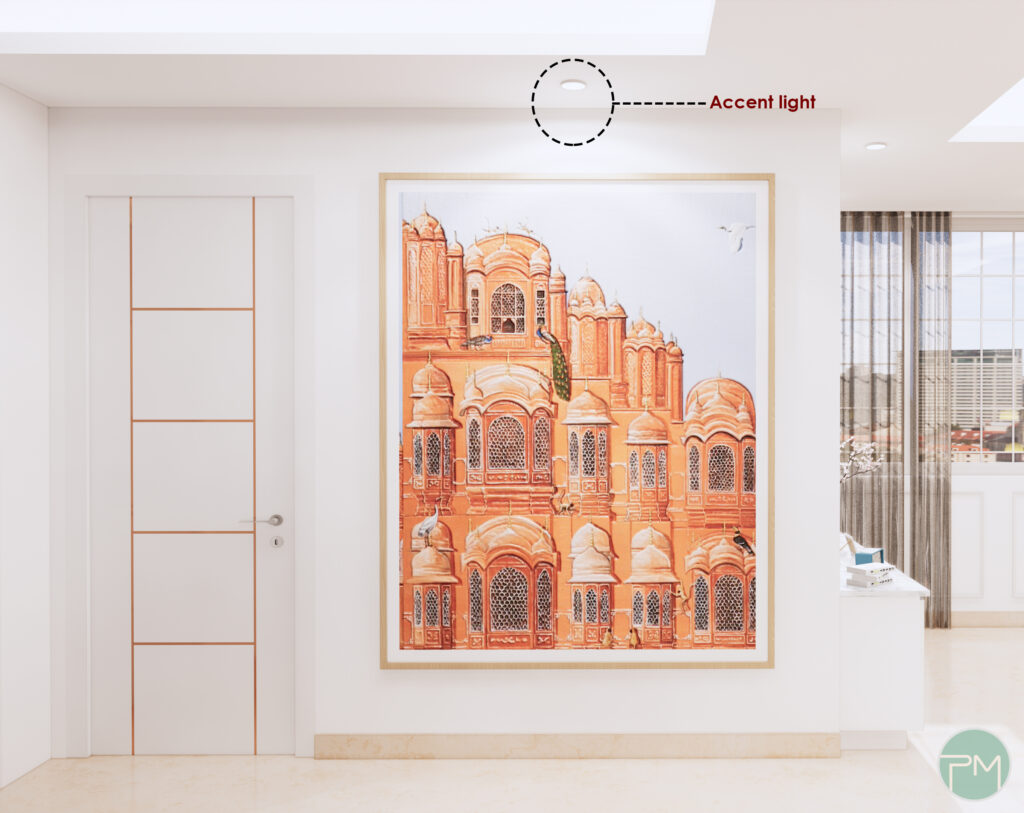
Common accent lights include-
• Wall lights
• Recessed spot lighting
• Track lighting
• Wall-mounted picture lights
Learn how we at ‘Prayogshala Manifesto‘ use lighting in different spaces –
Collect full set of guidelines to design your home – for free
As human eyes are suited for viewing the day light only, which has specific color rendering index and color temperature where sun is the only light source. That is also soothing only when the sun is not in our direct view, which is indirect sunlight. We at prayogshala manifesto match color temperature and intensity of sunlight to the artificial lights as it is coming from window or ceiling in every room.
Light Intensity
Further to this how much intensity is required for different tasks in different areas of a house, following is the list of areas with respective lumen requirements-
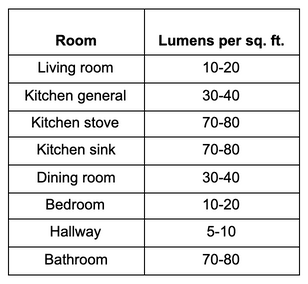
Lumens measure how much light you are getting from a bulb. A 60-watt incandescent bulb produces about 800 lumens of light. By comparison, an LED (light-emitting diode) bulb produces that same 800 lumens but uses only about 9 watts.
Taking an example of a 200 sqft bedroom, we need 200X 20 = 4000 lumens. We can have either 5 nos. 60 watt incandescent bulbs or 5 nos. 9 watts LED lights.
Color Temperature
There are three types of color temperature which usually come in artificial light
- Warm White
- Normal white
- Cool White
Following is the distribution of light sources and their color temperature for different areas.
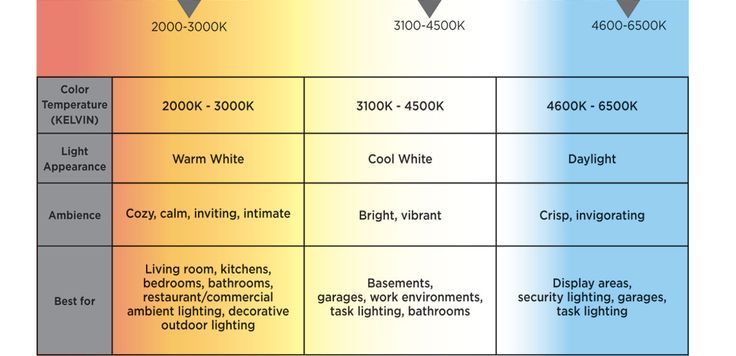
Collect full set of guidelines to design your home – for free
Need help?
We have simplified the understanding of lighting in interior spaces which can be used for simple jobs.
See how Prayogshala Manifesto can help you with lights in designing complex spaces with a large number of elements like residential apartments, restaurants, commercial offices, landscapes and other complex interior spaces.
Connect with us for guidance or consultation –